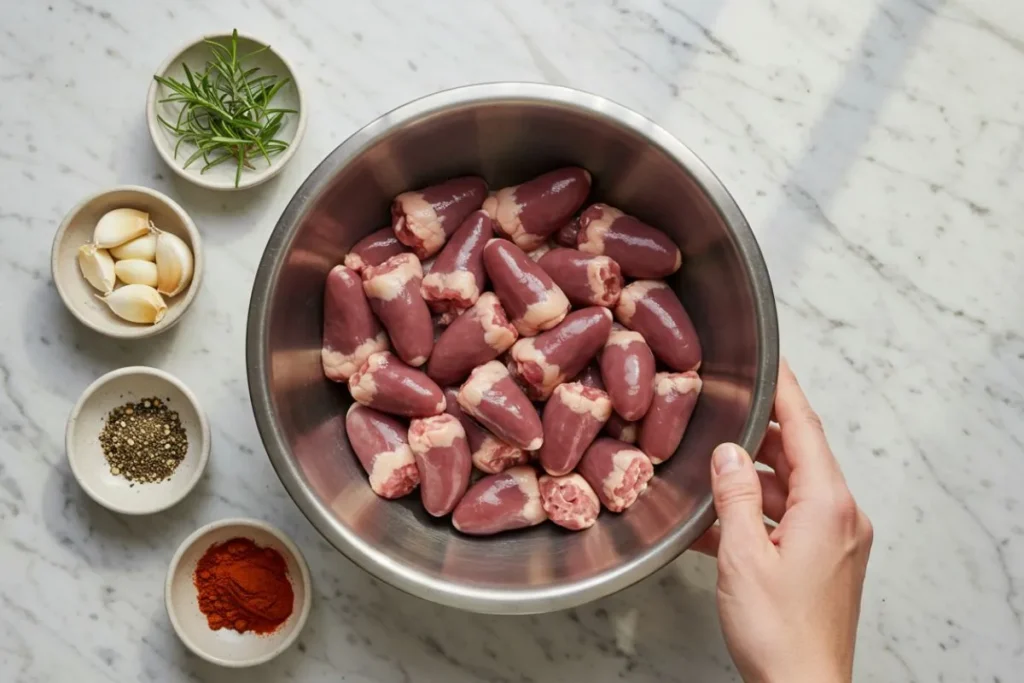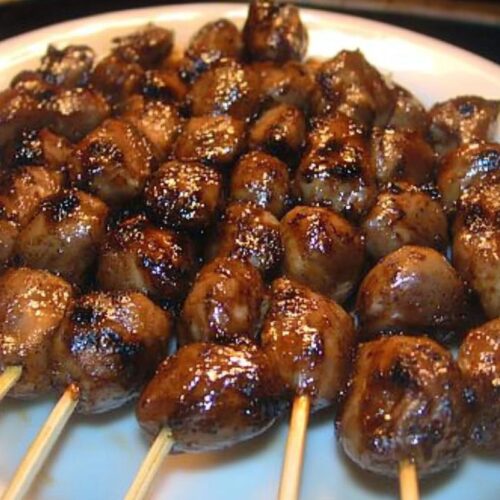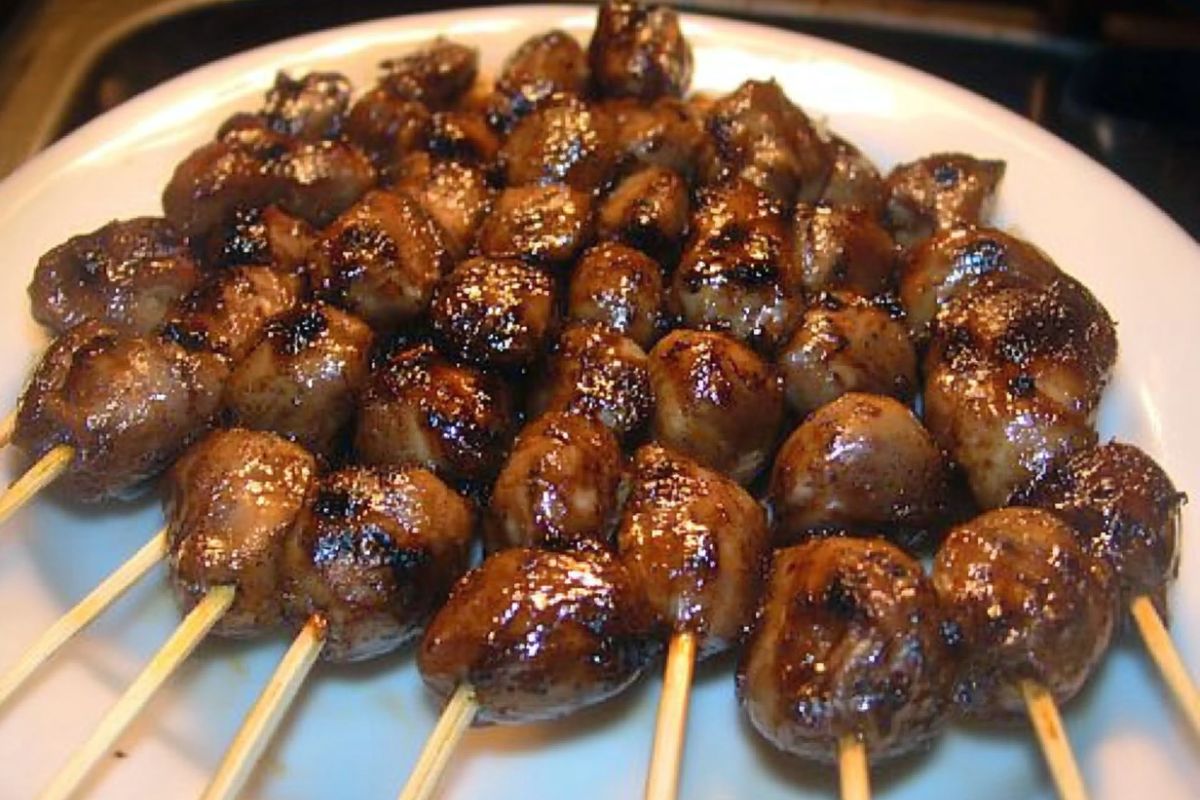When most people think of chicken, they’re probably picturing juicy thighs or crispy wings—but what if we told you that chicken hearts might just be the next superfood hiding in plain sight? Packed with protein, B vitamins, iron, and more, these tiny organ meats offer a serious nutritional punch. And guess what? They’re delicious, affordable, and surprisingly easy to cook.
In this article, we’ll explore everything you need to know about chicken hearts: what they are, their impressive nutrition profile, health benefits, how to cook them, and why they deserve a spot on your plate. Whether you’re a curious foodie, health enthusiast, or just tired of the same old meats, you’re in for a flavorful ride. Let’s dive in!
Table of Contents
What Are Chicken Hearts?
Understanding Chicken Hearts
They’re exactly what they sound like—the heart muscle of the chicken. But don’t let their small size fool you. These little guys are nutrient-dense, flavorful, and full of culinary potential. Commonly overlooked in Western kitchens, they’re actually a staple in many global cuisines, from Brazilian churrasco grills to Japanese yakitori skewers.
Unlike other types of organ meat, this cut has a mild, meaty flavor that makes it approachable, even for beginners. The texture is tender yet firm—something between steak bites and mushrooms—perfect for sautéing, grilling, or tossing into a hearty stew.
And here’s the kicker: they’re not just tasty—they’re packed with iron, zinc, copper, and B-complex vitamins. That’s why many nutrition-forward eaters call them a hidden gem of animal-based eating.
Cultural and Culinary History
Believe it or not, these little morsels have long held a special place in traditional diets worldwide. In Brazil, they’re grilled to perfection and served on skewers at barbecues. In Japan, hatsu (grilled hearts) are a favorite at yakitori stalls. Eastern European cuisines often add them to rich stews and broths, while many African dishes celebrate organ meats as everyday staples.
However, in Western countries, they’ve often been tossed aside or used as pet food—what a waste! Thankfully, that’s changing. More chefs and home cooks are rediscovering the value of these tiny organs, not just for their flavor but also for their impressive nutritional value.
By understanding the background of chicken hearts, you’re not just eating better—you’re connecting with a long culinary tradition that respects the whole animal and minimizes waste.
Chicken Hearts Nutrition Profile

Macronutrients: Protein, Fat & Carbs
Let’s break it down—this underrated cut of poultry is tiny but mighty when it comes to nutrition. A 100g serving delivers around 26 grams of protein, very few carbs, and just 6 grams of fat. That’s a power-packed combo for anyone following a keto, paleo, or low-carb lifestyle.
Thanks to their rich complete protein profile, these hearts support muscle growth, tissue repair, and immune function. They’re a flavorful alternative to standard chicken breast for those looking to add variety without compromising macros. Even better? They’re bursting with savory taste.
If you’re into high-protein meals, you might also love this Beef Breakfast Sausage—another delicious way to fuel your mornings, carb-free.
Vitamins & Minerals: B12, Iron, Zinc, Copper
Where chicken hearts really shine is in their micronutrient content. They’re loaded with:
- Vitamin B12 – crucial for energy, brain function, and red blood cell production.
- Iron – supports oxygen flow and fights fatigue.
- Zinc & Copper – boost immunity, skin health, and metabolism.
Plus, they also contain selenium, phosphorus, and riboflavin, which contribute to everything from bone strength to energy production.
Worried about cholesterol? No need to panic. While organ meats like these are a bit high in cholesterol, they’re also low in saturated fat. Modern studies suggest dietary cholesterol isn’t the villain it once was—especially when enjoyed as part of a nutrient-balanced diet. You can read more about the full nutritional profile and potential downsides here.
Still, if you’ve got existing heart concerns, moderation is your best bet. For most people, including small amounts of organ meat once or twice a week is a smart move toward better health.
Want something comforting with a touch of chicken? Check out this Million Dollar Chicken Casserole—great for pairing with organ meats or enjoying on its own.
Health Benefits of Chicken Hearts
Heart Health, Immunity & Energy Support
You might not expect it, but eating this nutrient-packed organ meat can actually benefit your own heart—ironic, right? These small cuts contain CoQ10 (Coenzyme Q10), a powerful antioxidant that supports cardiovascular function, especially for those with elevated blood pressure or cholesterol levels.
Beyond that, the iron and B vitamins found in these hearts help improve oxygen flow and boost overall energy—perfect for anyone feeling run-down or fatigued. Plus, the dynamic duo of zinc and selenium strengthens your immune system and helps you bounce back from illness faster.
The best part? Unlike most processed meats, this protein-rich option is free from added sugars, preservatives, or artificial fillers—making it a smart pick for whole-food enthusiasts and clean eaters alike.
If you’re looking for other dishes to boost immunity and energy, try this Scrambled Eggs with Cottage Cheese—it’s packed with protein and takes just minutes to whip up.
Are Chicken Hearts Good for Bodybuilding?
Absolutely. These little powerhouses are a bodybuilder’s dream—cheap, compact, and filled with essential nutrients. That 26g of protein per 100g is no joke. Not only do they help build muscle, but their rich iron content improves stamina and training endurance.
And don’t overlook the amino acids like taurine and carnitine—key players in fat metabolism and athletic performance. These aren’t just supplement buzzwords—they’re naturally present in this underrated cut of meat.
For athletes or anyone focused on muscle recovery, replacing the usual chicken breast with these little powerhouses can be a game-changer. Plus, they taste better when grilled or sauteed, giving your meal plan a much-needed upgrade.
Curious about more chicken options? Try the Marry Me Chicken Pasta—not as high in protein, but certainly a romantic way to enjoy your favorite poultry.
What Do Chicken Hearts Taste Like?
Flavor Profile & Texture of Chicken Hearts
So, what do these savory bites actually taste like? Surprisingly…not weird at all. In fact, many people describe their flavor as rich, slightly gamey, and a bit like dark meat chicken. Some even compare them to mushrooms due to their earthy undertones and meaty bite. That means they’re a perfect way to dip your toes into the world of organ meats without feeling overwhelmed.
Texture-wise, this protein-rich cut is firm and springy—definitely more structured than your typical chicken breast. But when cooked just right, they’re juicy and tender with a satisfying chew. That combo makes them ideal for dishes where you want something hearty and meaty, not soft or mushy.
They hold up well to bold seasonings too—think garlic, smoked paprika, soy sauce, or chili. Whether grilled on skewers or tossed into a stir-fry, they soak up flavor like sponges and never turn bland.
Once you taste them, it’s easy to see why cultures across the globe celebrate this underrated ingredient.
How to Cook Chicken Hearts
Preparation Basics: Cleaning & Marinating
Cooking chicken hearts starts with a little prep, but don’t worry—it’s super simple. First, give them a rinse under cold water. Then, trim off any fatty bits or tough arteries that might still be attached. Some folks slice them in half to ensure even cooking, especially for stir-fries.
Marinating is your best friend here. A quick soak in soy sauce, garlic, and lemon juice can work wonders. If you’re feeling adventurous, try ginger, chili, or even balsamic vinegar for a flavor boost. Since these hearts are small, they absorb marinades fast—20 to 30 minutes is plenty.
Pro tip: Don’t overcook them. They’re small, so they cook quickly and can go from tender to rubbery in a flash.
Popular Cooking Methods: Grilled, Sauteed, Braised

One of the best ways to enjoy chicken hearts is to skewer them and grill over high heat—hello, yakitori! This Japanese street food favorite uses simple seasoning (like salt and tare sauce) to highlight the meat’s natural taste. The result? Charred, smoky bites of juicy perfection.
Sautéing is another quick and easy method. Just toss the marinated hearts into a hot pan with a bit of oil and cook for 5–7 minutes until browned and cooked through. Pair them with onions, peppers, or mushrooms for a simple stir-fry.
Braised versions are beloved in Eastern European and Latin American kitchens. Simmer them slowly in broth, red wine, or tomato-based sauces until they become meltingly tender and full of flavor.
If you’re cooking for kids (or picky eaters), serving them in a savory sauce with rice or pasta can be a game-changer.
For more delicious recipes, check out our recipe article index for ideas ranging from casseroles to grilled chicken dishes. While you may not find hearts featured just yet, there’s plenty of culinary inspiration to explore.
Downsides & Considerations
Cholesterol and Purine Content in Chicken Hearts
While these nutrient-dense cuts offer many benefits, they’re not perfect for everyone. One of the main concerns is cholesterol. A 100g serving contains over 200mg, which clocks in at around 70% of the daily recommended intake. For most healthy individuals, this isn’t a huge issue—especially when consumed as part of a balanced, whole-food diet. However, if you’re managing high cholesterol or heart disease, moderation is key.
Another consideration is purine content—natural compounds that break down into uric acid. High-purine foods can trigger flare-ups for those with gout or certain kidney conditions, so it’s worth keeping in mind if you fall into either category.
Not Ideal for Everyone?
Although this organ meat is a powerhouse for many, it might not be for everyone. Some people may find the texture unfamiliar, especially if overcooked. And because these are internal organs, there’s always the risk of contaminants if the poultry wasn’t raised well.
That said, opting for high-quality, pasture-raised options can reduce those risks significantly. Like with any new food, it’s best to start small and see how your body responds. Balance, variety, and mindful sourcing go a long way in making the most of these flavorful cuts.
Where to Buy & How to Store Chicken Hearts
Where to Find Fresh or Frozen Chicken Hearts
You don’t need to search far to find this flavorful poultry part. They’re often available at local butcher shops, ethnic grocery stores, and even large supermarkets—usually tucked into the freezer section. If you’re lucky enough to have a farmers’ market nearby, you might even find pasture-raised or organic options.
Online meat suppliers are another great option. Many now offer organ meat boxes that include livers, hearts, and other nutrient-dense cuts—perfect for adventurous eaters or those following a carnivore-style diet.
Storage Tips and Shelf Life
Storing these hearts is easy. If you buy them fresh, keep them in the fridge and cook within 1–2 days. For longer storage, pop them in the freezer—they’ll stay good for up to 3 months.
When freezing, use airtight bags or containers to prevent freezer burn. And always thaw them in the fridge, not on the counter, to keep things safe and tasty.
Chicken Hearts Around the World
Traditional Dishes Featuring Chicken Hearts

Believe it or not, these flavorful morsels are more common in global cuisines than you might think. In Brazil, they’re a must-have at any churrasco barbecue. Grilled on skewers and seasoned simply with salt, they’re served hot and juicy, often alongside other cuts of meat.
Meanwhile, in Japan, this dish—called hatsu—is a popular type of yakitori. Skewered, grilled over charcoal, and brushed with a sweet soy glaze, it’s often paired with a cold beer for the ultimate street food experience.
Cultural Acceptance & Trends
Across the globe, eating offal is seen as a way to honor the whole animal. In Eastern Europe, Africa, and South America, hearts are regularly featured in stews, soups, and sautés. These meals aren’t just flavorful—they’re part of generations-old traditions.
Recently, Western chefs have started embracing offal again, making these nutrient-rich cuts trendier than ever, especially among nose-to-tail eaters and sustainability advocates.
Why Chicken Hearts Deserve a Spot on Your Plate
A Superfood Worth Trying
All in all, this underrated cut is a true nutritional gem. It’s packed with protein, iron, B12, and other essential nutrients—earning its place among the top superfoods in the world of organ meats. If you’re aiming to eat smarter without stretching your budget, this is one protein source you won’t want to overlook.
Easy to Cook, Easy to Love
From grilling to sautéing, these savory bites are easy to prepare and surprisingly tasty. Once you try them, you might find yourself coming back for more. Whether you’re into clean eating, bodybuilding, or just love bold flavors, these little hearts are sure to win yours over.
FAQs
Is eating chicken heart good for you?
Yes, absolutely. This organ meat is rich in protein, B vitamins, iron, and CoQ10—nutrients that support energy levels, immune health, and cardiovascular function. It’s especially great for those following high-protein or nutrient-dense diets.
What do chicken hearts taste like?
They taste like a cross between dark meat chicken and a mild steak. Slightly gamey but not overpowering, these cuts have a chewy texture and rich, savory flavor. They’re excellent grilled or sautéed.
How to cook the heart of chicken?
Start by cleaning them well, then marinate to enhance flavor. You can grill, sauté, or braise them. Just be sure not to overcook—5 to 10 minutes is usually plenty for a tender bite.
Are chicken hearts good for bodybuilding?
Yes! Thanks to their high protein content and rich amino acid profile, these nutrient-packed cuts are a fantastic food for muscle growth and recovery. They’re also packed with iron and B12, boosting stamina and performance.

Garlic Sautéed Chicken Hearts
Ingredients
- 1 pound chicken hearts cleaned and trimmed
- 2 tablespoons olive oil
- 4 cloves garlic minced
- 1 medium onion sliced
- 1 teaspoon smoked paprika
- ½ teaspoon salt or to taste
- ¼ teaspoon black pepper freshly ground
- 1 tablespoon soy sauce optional for extra umami
- 1 tablespoon lemon juice optional, for brightness
- 1 tablespoon fresh parsley chopped, for garnish
Instructions
- Rinse the chicken hearts under cold water and trim any fat or connective tissue.
- Pat the hearts dry with paper towels and optionally cut them in half for quicker cooking.
- In a bowl, toss the chicken hearts with soy sauce, lemon juice, and paprika. Let marinate for 20 minutes if time allows.
- Heat olive oil in a large skillet over medium-high heat.
- Add sliced onion and sauté for 2–3 minutes until slightly softened.
- Add garlic and cook for 30 seconds until fragrant.
- Add the chicken hearts and cook for 5–7 minutes, stirring occasionally, until browned and cooked through.
- Season with salt and pepper to taste. Garnish with fresh parsley before serving.

